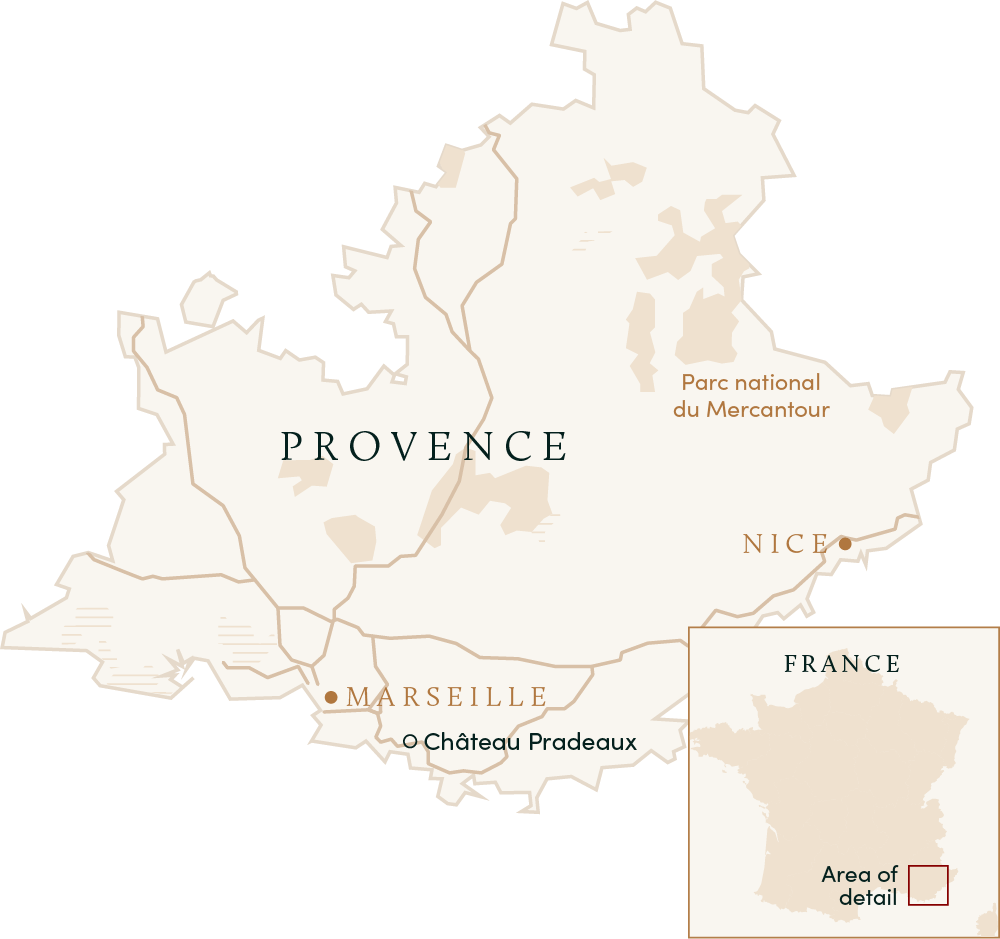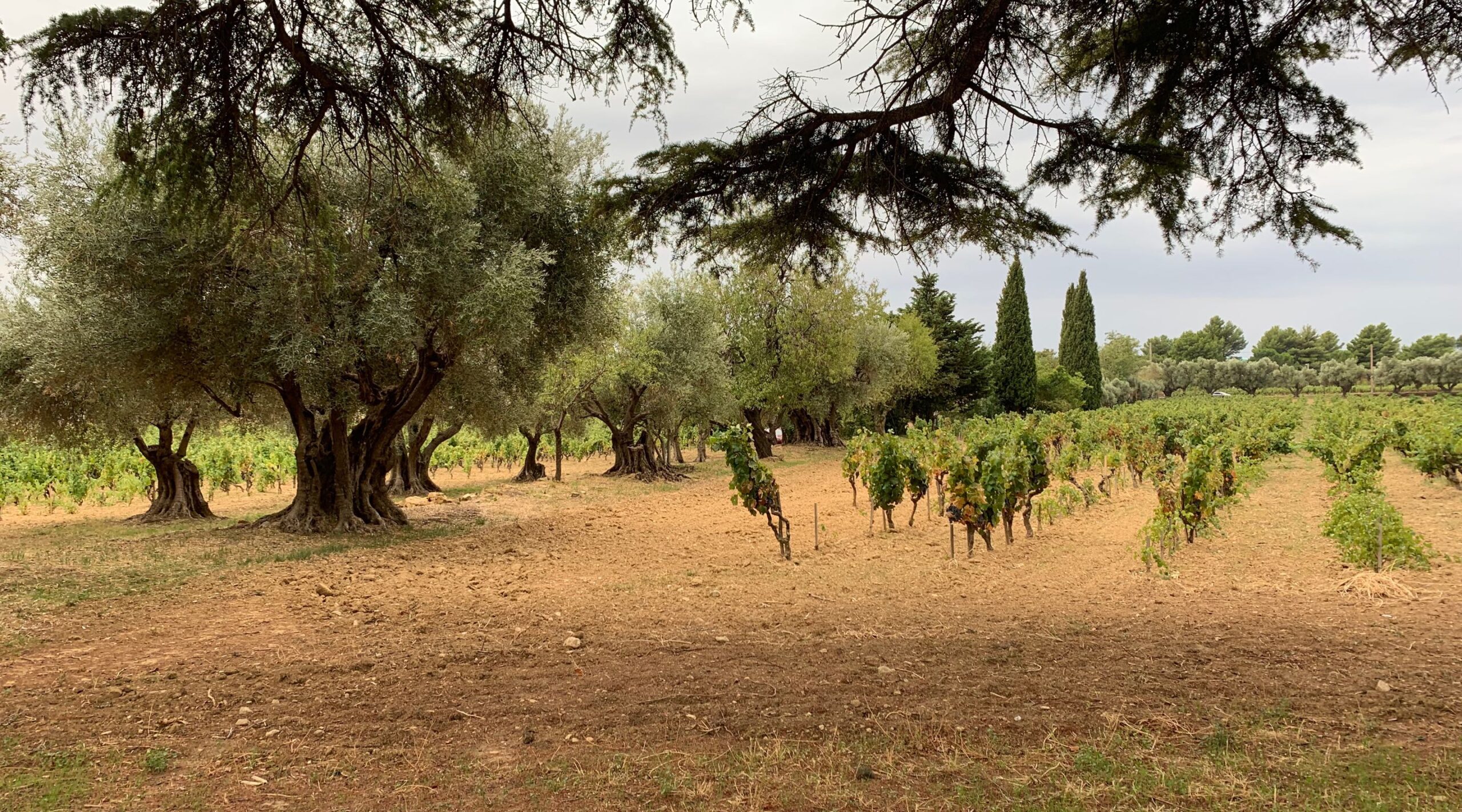There is the appellation of Bandol with its plethora of producers, some good, some mediocre; and then there is Château Pradeaux, the unique, inimitable, standard-bearer for this ancient wine-growing district. The Château Pradeaux is situated on the outskirts of the town of Saint Cyr-sur-Mer that lies directly on the Mediterranean Ocean between Toulon and Marseilles. The estate has been in the hands of the Portalis family since before the French Revolution. In fact, Jean-Marie-Etienne Portalis, who inherited the estate in 1752, helped draft the Napoleonic Code and assisted at the negotiation of the Concordat under Napoleon the First. The estate was devastated during the French Revolution and suffered the effects of the phylloxera epidemic in the 19th century. Suzanne Portalis and her daughter, Arlette, retreated to the domaine during World War II and undertook to revive the domaine. The domaine is currently under the direction of Cyrille Portalis, the sole direct descendant of Suzanne and Arlette. He continues to maintain the great traditions of this estate and is assisted by his wife, Magali, and now his two sons, Etienne and Edouard.



The domaine is currently under the direction of Cyrille Portalis, the sole direct descendant of Suzanne and Arlette. He continues to maintain the great traditions of this estate and is assisted by his wife, Magali, and now his two sons, Etienne and Edouard.
The vineyards are cultivated in as natural a manner as possible with reliance on organic methods. In fact, for many years during the spring months sheep grazed in the vineyards thereby eliminating any need to use herbicides and at the same time providing a natural compost. The wines of Pradeaux are brooding and difficult. Produced on the back of the noble Mourvèdre, Pradeaux in its youthful stages is tannic, backward and sometimes ornery. The wines are not destemmed; élevage in large oak foudres can last as long as four years; vines of less than 25 years of age are not used for the reds.
Château Pradeaux Bandol is composed of no less than 95% Mourvèdre (old vines). The nose is a mix of honey and white flowers with a hint of animal fur; the color is ruby red; the fruit stains the palate and is lengthened by a near-perfect sense of roundness; the final attack is of ripe tannins that are dusty and sweet. Château Pradeaux “Cuvée Longue Garde” is born exclusively of the oldest Mourvèdre vines on the estate (average age 45 years). Extraordinarily dense, with black notes to the color, the “Longue Garde” is marked by a strong scent of Provençal herbs combined with smoked red meat. This is a complete wine with incredible length; the flavors remind one of macerated plums and black currants. The super-ripe tannins are powerful and in perfect balance with the high fruit extract. This is the wine for the ages.
Although the major part of the vineyards is planted to Mourvèdre, the Château Pradeaux Bandol Rosé is composed of Cinsault as well as Mourvèdre. After a short maceration on the skins, in order to extract a light color, the juice is fermented at low temperatures to retain freshness, fruit and bouquet. After being aged in cement cuves, the wine is normally bottled in late spring of the year following the harvest. It is one of the richest of the rosés of France, dry but full-bodied with a floral bouquet.
Farming
Practicing Organic
Treatments
No herbicides, chemical fertilizers, or synthetic treatments
Ploughing
Extensive ploughing and working of the soil by tractor according to the lunar cycle
Soils
Limestone-clay
Vines
Head-trained vines, some over 100-years old, that are replanted on a vine-by-vine basis to maintain a healthy vineyard
Yields
Old vines naturally control yields, which are further supressed with an annual green harvest.
Harvest
Entirely manual harvest, grapes sorted in the vineyard and sorted again in the cellar
PURCHASING
Always entirely estate fruit
Fermentation
All wines are fermented spontaneously in whole clusters in large concrete vats with temperature control for 6-8 weeks.
Extraction
A combination of punchdowns and pumpovers depending on the vintage.
Chaptalization
None
Pressing
Direct, whole-cluster pressing for rosé wines
PRESS WINE
Press wine is aged separately from free-run juice.
Malolactic Fermentation
Red wines see malolactic in large centenary Alsacian foudres. Sulfur prevents malolactic for rosé wines.
Élevage
Rosé wines are raised in cement cuves for six months, while red wines see multi-year aging in enormous, ancient Alsacian foudres originally designed to hold beer.
LEeS
All wines spend time on their fine lees, 2 months for rosés and much longer for red wines.
FINING & FILTRATION
No fining and no filtration for reds. Rosés are unfined but are plate filtered.
SULFUR
Applied at harvest, after malolactic, and at bottling, 60-100 mg/l total sulfur for reds, c. 70-130 mg/l total sulfur for rosés. 30 mg/l maximum free sulfur at release.



